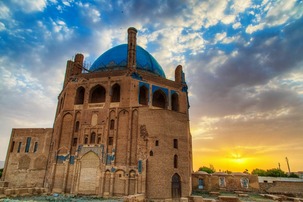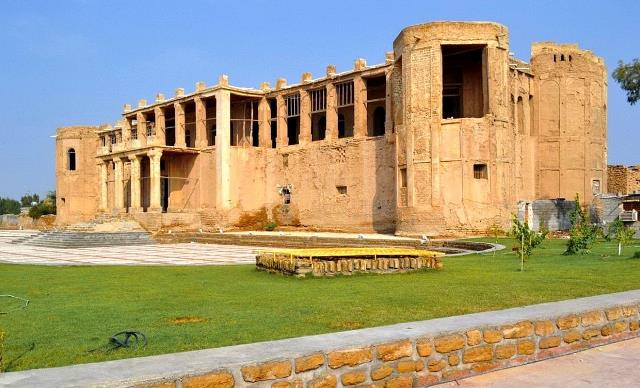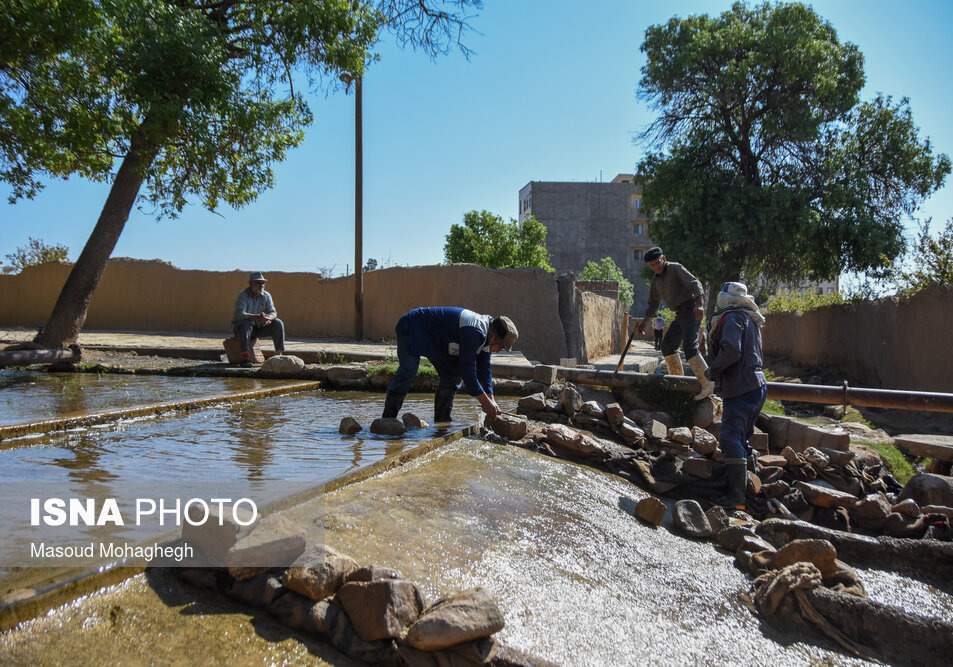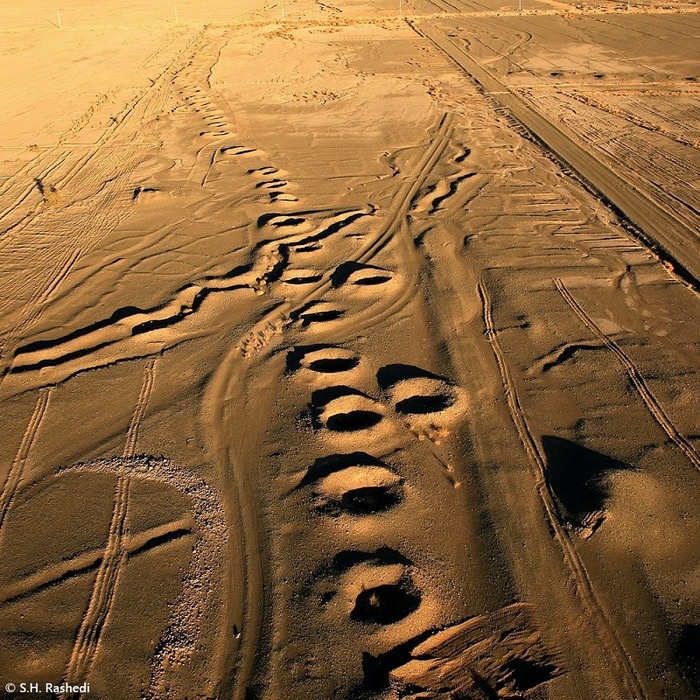
Soltaniyeh Dome (Mausoleum)
Soltaniyeh Dome (Mausoleum)
By: Kianoush Motaghedi
Soltanieh complex, which includes a dome, a tomb, and a cellar, is located 39 km southeast of the city of Zanjan. Being the last capital of the Mongolian dynasty of Ilkhanate during the reign of Sultan Mohammad Khodabandeh, the city of Soltaniyeh was considered one of the most important cities in Iran. The construction of the Soltaniyeh Dome dates back to about 704 AH / 1305 AD.
The tomb, which is located on the southern side of the dome, was built at the same time as the dome, between 714-715 AH / 1315-1316 AD. The dimensions of the tomb, which was the mausoleum of Sultan Mohammad Khodabandeh are 17.60 meters long, 7.80 meters wide, and 16 meters high. The roof covering the tomb is made of three arches and ridges, the central arch is larger and 9 meters long while the side arches are about three meters in diameter. On the southern exterior façade of the tomb (mausoleum), there are some arches that have windows installed around and above them that the light into the tomb.
Two symmetrical porticos of 160 cm wide and 3 meters high have been made to the north and south sides of this dome. A niche has also been built within the vicinity of the porch, the construction of which seems to have taken place when the Soltanieh Dome was redecorated in 717 AH / 1318 AD.
The southern facade of the tomb had, somehow, lost the set-square shape, and for this reason, a room was built on the west side to cover the existing deformity. The room has been built at a height of 2.3 meters from the floor and decorated with beautiful inscriptions of Quranic verses in Kufic and Thulth scripts. Another decorative element of the tomb is its tiling, which is done with a turquoise color background and arabesque and geometric designs.
The presence of some “hashtgirs” (irregular walls) in between the different parts of the tomb and the southeast and southwest sides of the dome, as well as the presence of the decorations, are the factors that confirm the simultaneous construction of the tomb and the dome.
The entrance door of the cellar is located on the porch on the southern side of the tomb. The cellar was, in fact, the site of royal tombs. The architectural design of the cellar is very complex and has several spaces. This type of mausoleum construction was probably inspired by the religious views of Mongols, i.e., “Shamanism”. The decorations used in the cellar include the brickwork in regular rows. By reflecting on the architectural style and examining the structural relationship between the spaces of this complex, it can be concluded that this type of dome and the spaces of the tomb (mausoleum) and the cellar, had been specially designed and built for Sultan Mohammad Khodabandeh (Oljaitu).
This monument is considered the best example of the architecture of the Ilkhanate era and the third largest brick dome in the world.
Sources:
- Mirfattah, “Soltaniyeh”, The Iranian Cities, Vol. 4, Compiled by Yousef Kiani, Jahad Daneshgahi Publications, Tehran, 1991
- Mausoleum Buildings, Encyclopedia of Historical Monuments of Iran in the Islamic period, Hozeh Honari, 1997
- Sobouti, Houshang, A Review of the Soltaniyeh Historical Monuments, Zanjan: 1991
- Hamzehlou, Manouchehr. Applied Arts in Soltaniyeh Dome, Zanjan: Makan Publishing, 2002
| Name | Soltaniyeh Dome (Mausoleum) |
| Country | Iran |
| Historical Period | The Mongolian dynasty of Ilkhanate |
| Manufacturer | Sultan Mohammad Khodabandeh |
.png)
.jpg)
_crop.jpg)
.jpg)
.jpg)
.jpg)

.png)
.jpg)
_crop.jpg)
.jpg)
.jpg)
.jpg)

Choose blindless
Red blindless Green blindless Blue blindless Red hard to see Green hard to see Blue hard to see Monochrome Special MonochromeFont size change:
Change word spacing:
Change line height:
Change mouse type:










.jpg)



